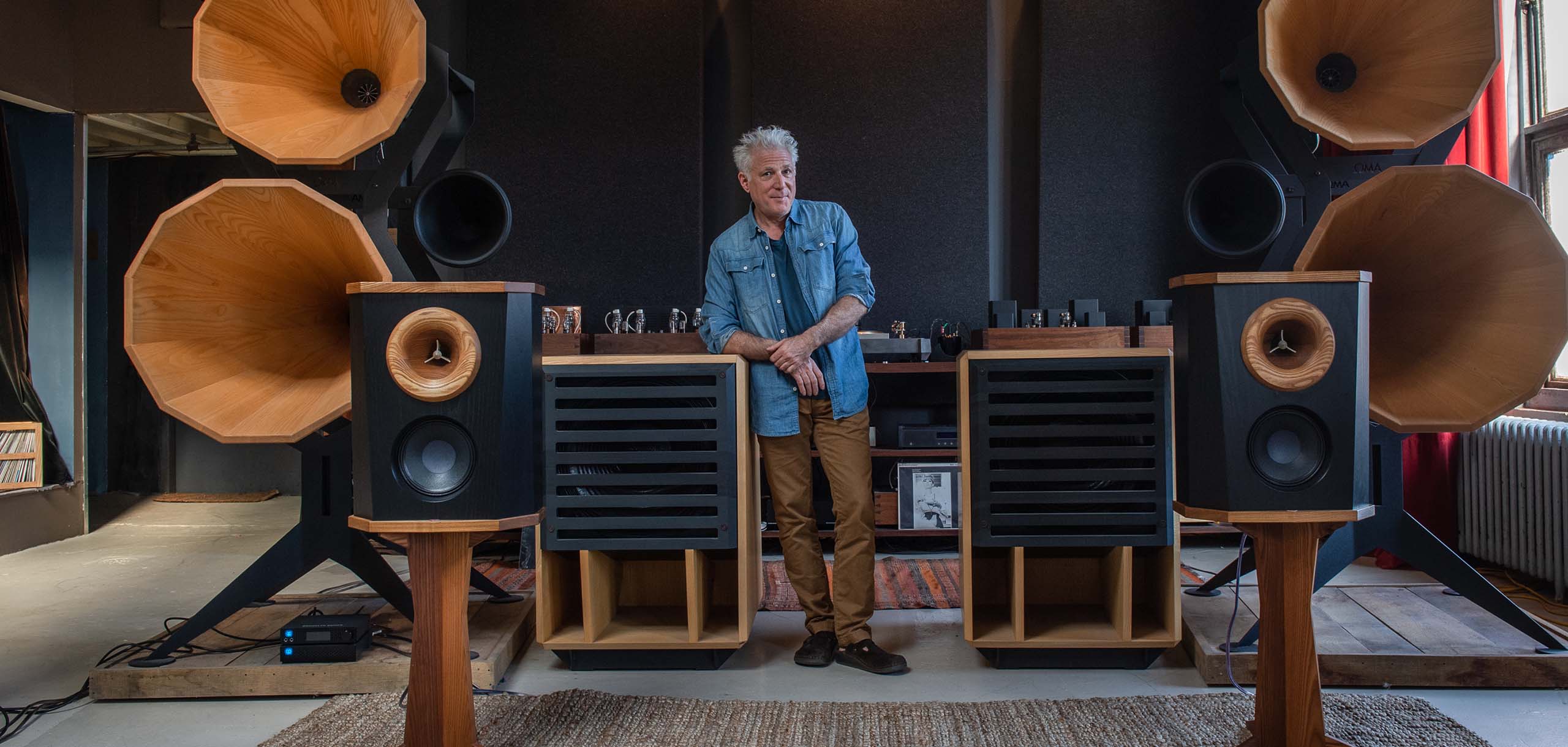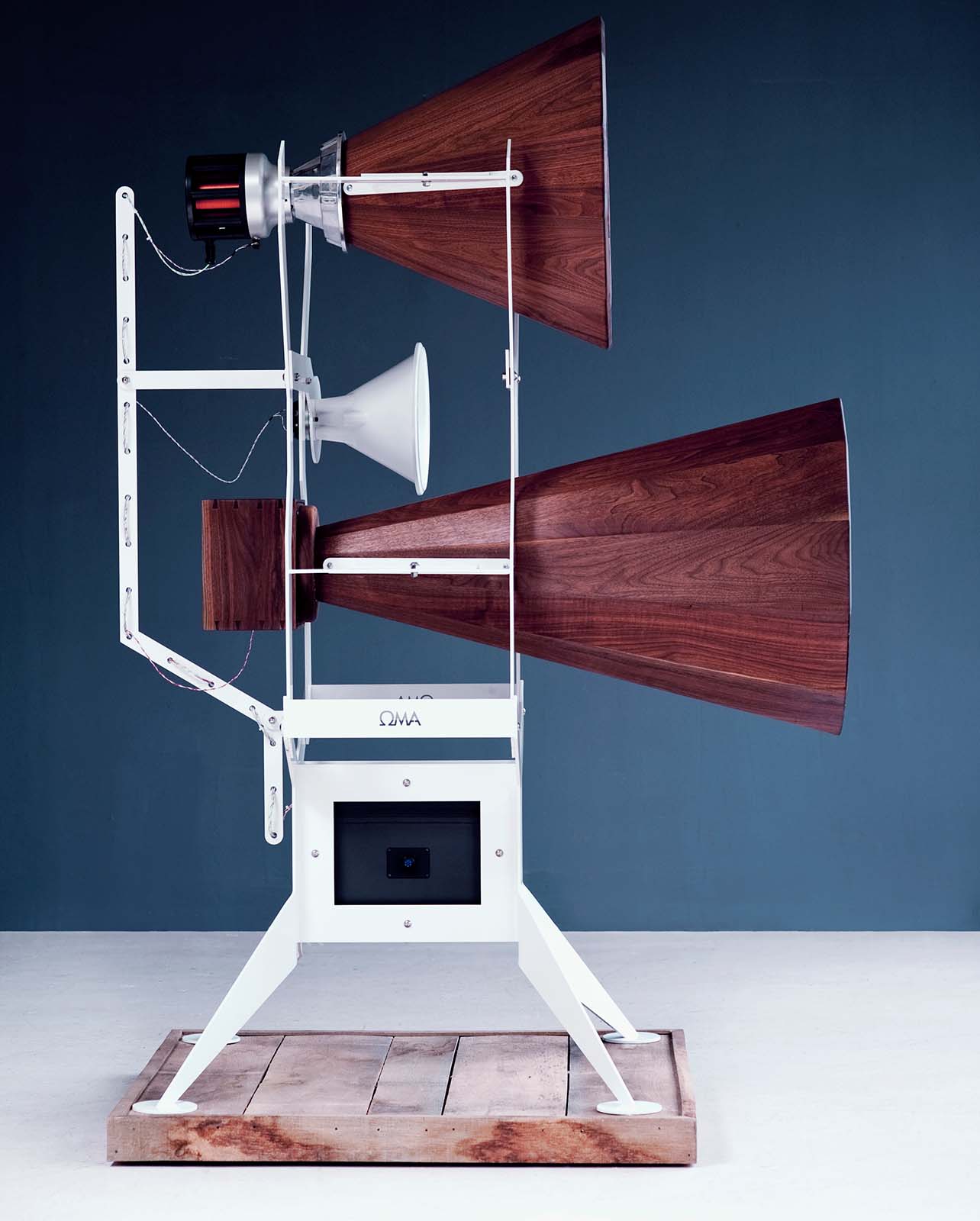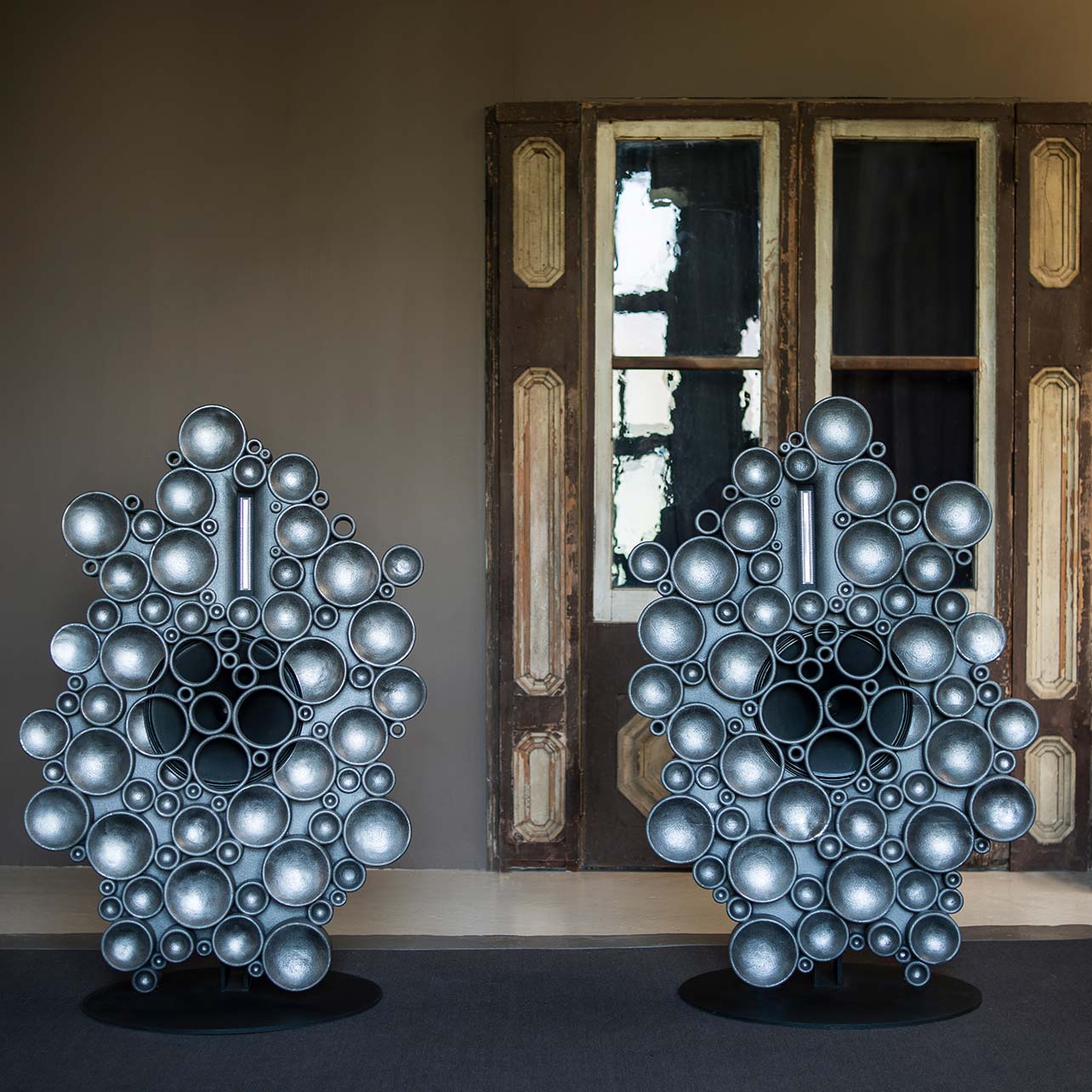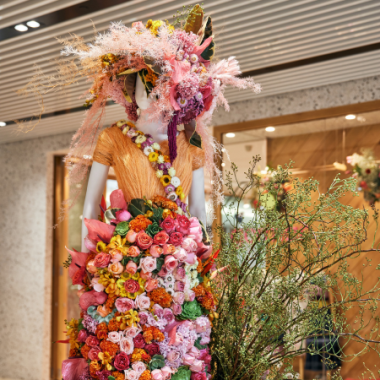
Portrait by Cynthia Van Elk.

OMA’s Imperia Speaker.
A Muddy Waters album is playing, and though I know the recording, I don’t know how much lies within it. Made in September 1963, Muddy Waters’ Folk Singer is the sound of acoustic guitars and basses and a very quiet snare drum. Over this particular pair of speakers, Folk Singer doesn’t feel like music but rather the evidence of the physical space between four people. The musicians are simply there, in the way a tree might be in front of me. Everything is present in an unfancy, physical way.
Muddy Waters sounds like this because Jonathan Weiss is playing his record over Oswalds Mill Audio Imperia speakers, as well as a gang of other OMA gear. We are in his long and roomy loft in Dumbo, Brooklyn, which feels like an art gallery precisely because of these speakers, which look a bit like 18th century farm equipment, all buttery wood and dark metal. These objects seem so unlike technology, as we think of that category now, and yet they are absolutely speakers, made of iron and slate and, most visibly, wood.
“Wood is difficult and expensive,” Weiss says. “There’s a reason people haven’t used it.” But Weiss does use wood and a host of natural resources that haven’t been common in audio equipment since the early 20th century. The equipment produced in the Oswalds Mill factory in Fleetwood, Pennsylvania, is outside both time and fashion. It’s expensive, but it’s also not really designed to be popular or fashionable. What Weiss found almost thirty years ago was something like Atlantis, or the Dead Sea Scrolls of audio. We had great sound, and then we walked away from it. “The RCA gear used in cinema before World War II sounded amazing. I got to work in a movie theater growing up and that’s where it began.”
A New York kid transplanted to LA, Weiss worked in an old movie theater in Westwood as a teenager, where he heard his first proper cinema sound system. After university at Princeton and the London School of Economics, Weiss moved back to New York and taught himself filmmaking. He’s passionate about what he does, whatever it is. In 1999, he released his directorial debut, Atrocity Exhibition, an adaption of J.G. Ballard’s 1970 experimental novel.
After that, he stumbled onto a rare house mill in Pennsylvania, which had been lying in ruins for nearly half a century. He restored and occupied the building, which in turn inspired the name of
his audio company, launched in 2006. This career path does not conform to any advice you’d get from productivity gurus or TED talks. Weiss doesn’t primarily produce his gear to make money, and as pricey as the OMA products are, much of the proceeds go back into the process.
Weiss threw himself into the search from the start, an audio explorer who knew there was a place that the gear just wasn’t getting to. His first model, the AC-1, was made for photographer Anton Corbijn in 2006. Luminous wooden contraptions, they look a bit like windmills. The Ironic speakers, made of iron and vastly heavy in order to isolate the gear from vibrations, look like little clouds of bubbles, as if an iron Zeus had blown them through a tube.

The Ironic speakers, made of iron and vastly heavy in order to isolate the gear from vibrations, look like little clouds of bubbles, as if an iron Zeus had blown them through a tube.
What Weiss makes does something profound, creating an effect that goes way beyond and above categories like “wow” or “cool.” OMA gear reconnects music to its elemental and physical nature, and reveals what is in a recording. Not everything sounds great on this equipment—overly produced records, for example, don’t respond well to this pure-sound approach. OMA gear simply tells you the truth, which is an idea as alien to commercial ventures as making speakers out of wood.
When he plays me Bob Dylan’s “Don’t Think Twice, It’s Alright,” he tells me about the harmonica test. “Harmonicas work with harmonic frequencies that are very hard to reproduce,” Weiss says. “They almost never sound good.”
When Dylan finishes the chorus, and adds a wheezing little harmonica figure, it doesn’t sound like my memories of the record. The tone is unexpectedly soft, like a few colored banners flapping out into the breeze and then falling back against the building. I wouldn’t know how to describe it beyond saying that it sounds like what Dylan actually did. Whether or not it is good is a condition that Weiss and OMA return to the artist and his music. This equipment is so good you simply forget it’s there, even the six-foot tall wooden sentries.




